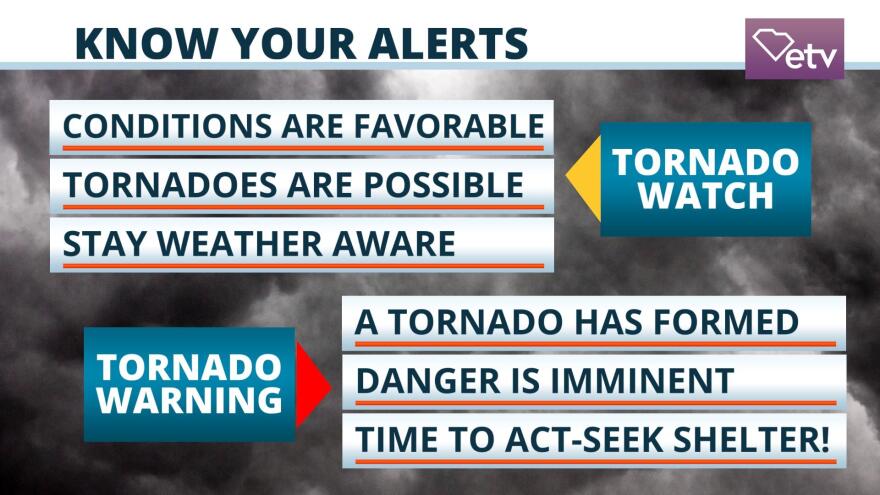Test tornado messages will scroll across local radio and television stations, and NOAA Weather Radio Wednesday morning at 9 a.m. as part of Severe Weather Awareness Week in South Carolina.
National Weather Service Offices in Greenville, Columbia, Charleston, and Wilmington, NC will generate a test tornado warning. This drill is designed to test warning systems and act as reminder to South Carolinians to develop and put into practice plans in a case a tornado affects them. According to South Carolina's Emergency Management Division, the State Superintendent of Education is also encouraging schools statewide to participate in the drill.
An average of 14 tornadoes per year touch down in the Palmetto State state based on data from the South Carolina State Climatology Office. According to research published in 2018 in "Weather, Climate, and Society", mobile homes accounted for more than half of all housing-related tornado deaths, but represent about 6 percent of all housing units in the U.S. South Carolina leads the nation with mobile homes comprising of about 17 percent of all housing based on the most recent U.S. Census data.
The safest place to shelter when a tornado approaches is in the lowest level of a well-constructed home or building. Identify an area that is away from windows and outside walls and remain there if a tornado warning is issued for your area. Fatalities from tornadoes disproportionately occur in mobile homes, and are not the safest place to shelter when a tornado approaches. Residents in mobile homes should identify a safe location, such as a nearby building, well in advance of severe weather.
Tornado Warnings are typically issued minutes before a tornado strikes, so it is critically important to have many ways to receive alerts and to arrive at the shelter safely within a few moments' notice. Meteorologists at the National Weather Service make an effort to issue Tornado Watches hours prior to the onset of tornadoes over a large area. The Tornado Watch precedes a Tornado Warning, and can give residents a heads up that they may need to seek shelter at a later time if a warning is issued. On a few occasions, Tornado Warnings are issued without a pre-existing watch.
Meteorologists are often asked: "Where do you get your warnings and weather information from?" Many have smartphone applications or use the built-in capability of the Wireless Emergency Alerts (WEA) available on nearly all modern devices. However, there is no technology that is perfect, and a commercially-available NOAA Weather Radio remains one of the best ways to receive watches and warnings. Local broadcasters also carry hazardous weather alerts and many local meteorologists provide up-to-the-minute information based on radar and occasionally reports from the ground. Experts recommend that everyone have more than one way to receive these warnings, especially at night, when tornado dangers are the highest.


